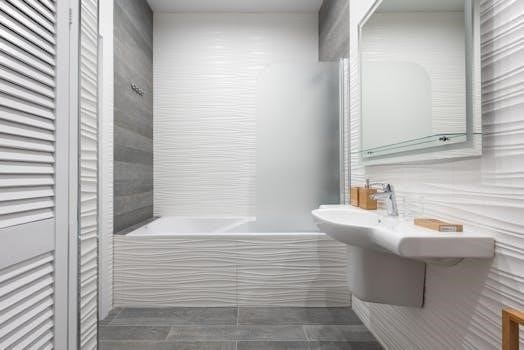Bathroom Plumbing Materials⁚ An Overview
Understanding the various materials used in bathroom plumbing is essential for any DIY enthusiast or professional․ This overview will introduce you to the common types‚ their uses‚ and where to find visual resources․ Choosing the right material is crucial for long-lasting plumbing․
Bathroom plumbing involves a variety of materials‚ each with specific properties and applications․ From pipes to fittings‚ selecting the right material is crucial for ensuring a durable and efficient system․ Common materials include PVC‚ CPVC‚ copper‚ and PEX‚ each offering distinct advantages in terms of cost‚ flexibility‚ and resistance to temperature and corrosion․
Understanding these differences is essential for making informed decisions during installation or repair․ Furthermore‚ fittings like couplings‚ elbows‚ and tees play a vital role in connecting pipes and directing water flow․ For visual learners‚ resources such as “Plumbing Materials Name List PDF with Pictures” can be invaluable for identifying and understanding the uses of various components․
Whether you’re a homeowner tackling a DIY project or a professional plumber‚ a solid grasp of bathroom plumbing materials is key to success․ Remember that local codes and regulations may influence material choices‚ so always consult with experts when in doubt․
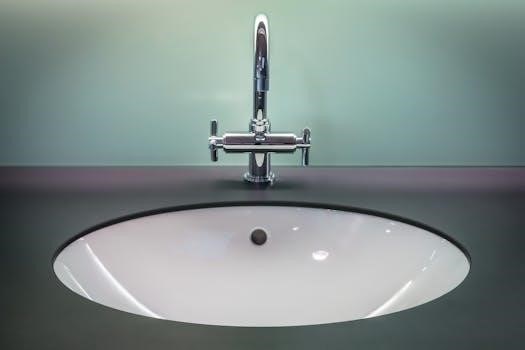
Common Bathroom Plumbing Materials
Several materials are commonly used in bathroom plumbing‚ including PVC‚ CPVC‚ copper‚ and PEX․ Each offers unique benefits for different applications in a bathroom setting․ Selecting the right one is crucial․
PVC (Polyvinyl Chloride) Pipes and Fittings
PVC‚ or Polyvinyl Chloride‚ is a widely used plastic material in bathroom plumbing due to its cost-effectiveness and ease of installation․ PVC pipes and fittings are ideal for drain‚ waste‚ and vent (DWV) systems․ They are resistant to corrosion and chemical damage‚ making them a durable choice for waste disposal․
PVC is joined using primer and solvent cement‚ creating a watertight seal․ However‚ it’s essential to note that PVC is not suitable for hot water supply lines‚ as it can soften and deform under high temperatures․ Available in various sizes and configurations‚ PVC fittings include elbows‚ tees‚ couplings‚ and adapters‚ enabling flexible and efficient plumbing layouts․
When working with PVC‚ ensure proper ventilation to avoid inhaling fumes from the solvent cement․ Despite its limitations regarding hot water‚ PVC remains a popular choice for cold water and drainage applications in bathrooms․
CPVC (Chlorinated Polyvinyl Chloride) Pipes and Fittings
CPVC‚ or Chlorinated Polyvinyl Chloride‚ is another plastic material commonly used in bathroom plumbing‚ particularly for hot and cold water supply lines․ CPVC is similar to PVC but undergoes an additional chlorination process‚ making it suitable for handling higher temperatures without deforming or degrading․
CPVC pipes and fittings offer excellent resistance to corrosion and chemical damage‚ ensuring a long lifespan for your plumbing system․ They are joined using solvent cement‚ similar to PVC‚ creating a strong and leak-proof connection․ CPVC fittings include couplings‚ elbows‚ tees‚ and adapters‚ allowing for versatile plumbing designs․
Compared to copper pipes‚ CPVC is more affordable and easier to install‚ requiring no soldering․ However‚ CPVC may not be as heat-resistant as copper in extreme conditions․ When installing CPVC‚ it’s crucial to use the correct type of solvent cement specifically designed for CPVC to ensure a proper bond․
Copper Pipes and Fittings
Copper pipes and fittings have been a standard in plumbing for decades‚ prized for their durability and resistance to corrosion․ Copper is an excellent choice for both hot and cold water lines due to its high heat tolerance and ability to withstand pressure․ There are primarily two types of copper pipes used in plumbing⁚ rigid copper and flexible copper․
Rigid copper‚ often referred to as Type L or Type M‚ requires soldering or brazing to create strong‚ leak-proof joints․ Flexible copper‚ also known as copper tubing‚ is easier to bend and maneuver around obstacles‚ reducing the number of fittings needed․
Copper fittings include couplings‚ elbows‚ tees‚ and adapters‚ all designed to be soldered or brazed to the pipes․ While copper is more expensive than plastic alternatives like PVC or PEX‚ its longevity and reliability make it a worthwhile investment for many homeowners․ Proper installation is key to preventing leaks and ensuring the system’s longevity․
PEX (Cross-linked Polyethylene) Pipes and Fittings
PEX‚ or cross-linked polyethylene‚ has become a popular choice for plumbing systems due to its flexibility‚ durability‚ and ease of installation․ Unlike rigid pipes‚ PEX can bend around corners‚ reducing the need for numerous fittings and simplifying the plumbing process․ This flexibility also makes it more resistant to freezing and bursting in cold climates․
PEX is available in various colors‚ typically red for hot water lines and blue for cold water lines‚ which helps in easy identification․ PEX fittings come in several types‚ including crimp fittings‚ expansion fittings‚ and push-fit fittings․ Crimp fittings use a copper or stainless steel ring that is crimped onto the PEX pipe to create a secure connection․
Expansion fittings use an expansion tool to enlarge the PEX pipe before inserting the fitting‚ creating a tight seal as the pipe contracts․ Push-fit fittings are the easiest to install‚ requiring no special tools; they simply push onto the PEX pipe․ PEX is a cost-effective and reliable option for both new construction and renovation projects․
Brass Fittings
Brass fittings are a common and reliable choice in bathroom plumbing due to their durability and resistance to corrosion․ Brass is an alloy of copper and zinc‚ making it strong and able to withstand high temperatures and pressures․ These fittings are often used in connecting pipes‚ valves‚ and fixtures within a bathroom’s plumbing system․ Brass fittings are available in various shapes and sizes‚ including couplings‚ elbows‚ tees‚ and adapters‚ to accommodate different plumbing configurations․
One of the primary advantages of brass fittings is their resistance to rust and degradation‚ ensuring a long lifespan and reducing the risk of leaks․ Brass fittings are also relatively easy to install‚ requiring basic plumbing tools and techniques․ They create a secure and watertight seal when properly connected‚ contributing to the overall reliability of the plumbing system․
While brass fittings may be slightly more expensive than some plastic alternatives‚ their durability and longevity make them a worthwhile investment for any bathroom plumbing project․ They are suitable for both hot and cold water lines‚ providing versatility and peace of mind․
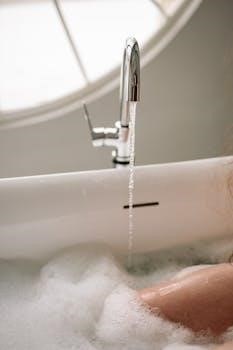
Essential Plumbing Fittings
Plumbing fittings are vital components that connect pipes and control water flow․ They come in various shapes and materials‚ including couplings‚ elbows‚ and tees․ Understanding these fittings ensures effective plumbing system design․
Couplings
Couplings are essential plumbing fittings designed to connect two pipes of the same diameter․ They provide a secure and leak-proof joint‚ ensuring the seamless flow of water within the plumbing system․ Couplings are commonly used to extend pipe runs or repair damaged sections‚ making them indispensable for both residential and commercial plumbing applications․
These fittings are available in various materials‚ including PVC‚ CPVC‚ copper‚ and brass‚ each offering specific advantages for different plumbing needs․ PVC couplings are lightweight and corrosion-resistant‚ ideal for drainage systems․ Copper couplings provide excellent durability and heat resistance‚ suitable for hot water lines․ Brass couplings offer strength and resistance to dezincification‚ often used in potable water systems․
When selecting couplings‚ it is crucial to consider the pipe material‚ size‚ and application to ensure a proper fit and optimal performance․ Proper installation‚ using appropriate solvents or soldering techniques‚ is essential to prevent leaks and maintain the integrity of the plumbing system․ Couplings are a fundamental part of any plumbing project․
Elbows
Elbows are critical plumbing fittings used to change the direction of pipe runs․ They allow plumbers to navigate around obstacles and create efficient plumbing layouts; Available in various angles‚ such as 90-degree and 45-degree‚ elbows provide flexibility in designing and installing plumbing systems․ These fittings are essential for directing water flow around corners and connecting pipes in tight spaces․
Similar to couplings‚ elbows are manufactured from different materials like PVC‚ CPVC‚ copper‚ and brass․ PVC elbows are commonly used in drainage and ventilation systems due to their cost-effectiveness and resistance to corrosion․ Copper elbows are preferred for potable water lines because of their durability and ability to withstand high temperatures․ Brass elbows offer strength and resistance to corrosion‚ making them suitable for various plumbing applications․
When selecting elbows‚ it is vital to match the pipe material and size to ensure a secure and leak-proof connection․ Proper installation‚ using appropriate solvents or soldering techniques‚ is crucial for the long-term performance of the plumbing system․ Elbows are a fundamental part of any well-designed plumbing network․
Tees
Tees are essential plumbing fittings designed to create branches in a pipeline‚ allowing for the distribution of water or other fluids to multiple outlets․ These fittings are characterized by their T-shape‚ with one inlet and two outlets‚ enabling the connection of three pipes simultaneously․ Tees are widely used in bathroom plumbing to split water supply lines for fixtures like sinks‚ toilets‚ and showers․
Available in various materials‚ including PVC‚ CPVC‚ copper‚ and brass‚ tees offer versatility for different plumbing systems․ PVC tees are commonly used in drainage and waste systems due to their resistance to corrosion and cost-effectiveness․ Copper tees are preferred for potable water lines because of their durability and ability to withstand high temperatures and pressure․ Brass tees provide strength and resistance to corrosion‚ making them suitable for a range of plumbing applications․
Selecting the correct tee material and size is crucial for ensuring a secure and leak-free connection․ Proper installation‚ using appropriate solvents‚ soldering‚ or threading techniques‚ is essential for the long-term performance of the plumbing system․ Tees play a vital role in the efficient distribution of water throughout a bathroom’s plumbing network․
Flanges
Flanges are critical plumbing fittings used to connect pipes‚ valves‚ pumps‚ and other equipment to create a secure and leak-proof joint․ They are particularly useful in areas where plumbing components need to be easily disassembled for maintenance or replacement․ A flange consists of a raised rim or collar that is typically bolted to another flange‚ creating a tight seal․
In bathroom plumbing‚ flanges are commonly used to connect toilets to the drainage system and to secure showerheads and faucets to the wall․ They provide a stable and reliable connection‚ preventing movement and leaks․ Flanges are available in various materials‚ including brass‚ stainless steel‚ and PVC‚ each offering different levels of corrosion resistance and durability․
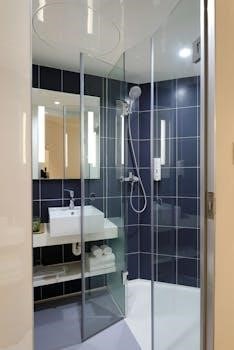
Brass flanges are often used in potable water systems due to their resistance to corrosion and ability to withstand high temperatures․ PVC flanges are suitable for drainage and waste systems‚ offering a cost-effective and lightweight solution․ Stainless steel flanges provide excellent strength and corrosion resistance‚ making them ideal for demanding applications․ The choice of flange material depends on the specific requirements of the plumbing system․
Proper installation of flanges involves ensuring that the mating surfaces are clean and aligned correctly․ Gaskets or sealing compounds are often used to enhance the seal and prevent leaks․
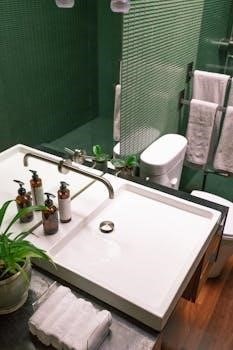
Resources for Visual Identification
Identifying plumbing materials can be challenging․ Visual aids are incredibly helpful․ A PDF with pictures of plumbing materials can be a valuable resource for quick identification and understanding their applications in bathroom plumbing projects․
Plumbing Materials Name List PDF with Pictures
A comprehensive “Plumbing Materials Name List PDF with Pictures” is an invaluable tool for anyone involved in plumbing‚ from DIY homeowners to seasoned professionals․ These resources typically compile a visual directory of various plumbing components‚ accompanied by their names and brief descriptions․ This format helps in quickly identifying specific parts needed for repairs‚ installations‚ or renovations‚ especially in bathrooms․
The PDF usually includes illustrations or photographs of pipes‚ fittings‚ valves‚ and other essential plumbing materials‚ such as PVC‚ CPVC‚ copper‚ and PEX․ Each item is clearly labeled‚ making it easy to distinguish between similar-looking components like elbows‚ tees‚ couplings‚ and flanges․
These PDFs often categorize materials by type (e․g․‚ pipes‚ fittings) or application (e․g․‚ supply lines‚ drain lines)‚ further simplifying the identification process․ Some may also include information on material properties‚ sizes‚ and recommended uses‚ enhancing their educational value․ Accessing such a PDF can save time and reduce errors in material selection‚ ensuring efficient and accurate plumbing work․
In conclusion‚ understanding bathroom plumbing materials is crucial for successful installations‚ repairs‚ and renovations․ This knowledge empowers both homeowners and professionals to make informed decisions‚ ensuring the longevity and efficiency of plumbing systems․ From PVC and CPVC to copper and PEX‚ each material offers unique properties suitable for specific applications․
The correct selection of fittings like couplings‚ elbows‚ tees‚ and flanges is equally important for creating leak-proof and reliable connections․ Utilizing resources such as “Plumbing Materials Name List PDF with Pictures” can significantly aid in identifying and selecting the appropriate materials for any plumbing project․
By combining theoretical knowledge with visual aids‚ individuals can confidently navigate the complexities of bathroom plumbing․ This approach not only saves time and reduces errors but also promotes safety and prevents costly mistakes․ Ultimately‚ a solid grasp of plumbing materials and their applications leads to well-functioning and durable bathroom plumbing systems‚ enhancing the overall quality of life․
